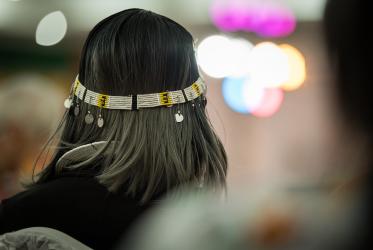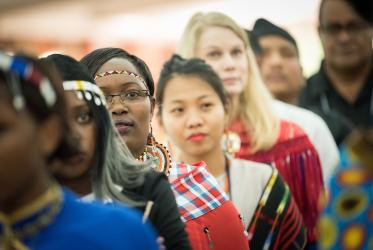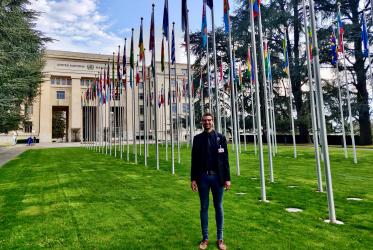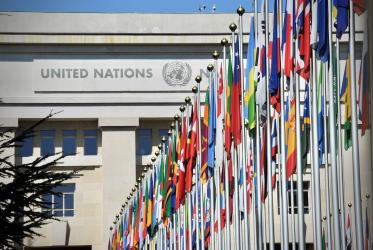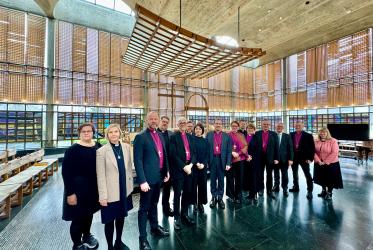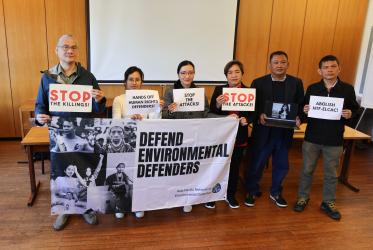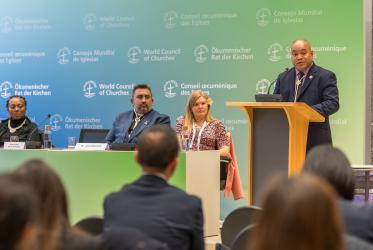Journeying from urban centres and small Pacific islands, mountain ranges and rural towns, more than 170 Indigenous people gathered this week at the mouth of the river that flows from traditional Sami lands. Their conference, “Reconciliation Processes and Indigenous Peoples: Truth, Healing and Transformation,” brought together representatives of more than two dozen Indigenous societies in connection with the WCC Central Committee meetings in Trondheim, Norway.
Though the people gathered represented a diversity of traditions, common experiences united them. Cultural genocide, loss of land and language, and ongoing social exclusion were common themes in the stories they told. Their words—even dance and song—were testament to the vulnerability and resilience of Indigenous Peoples worldwide.
Worldwide, Indigenous Peoples continue to suffer disproportionately from colonization, oppression, and all forms of exploitation. Churches have not been immune to these forces and are often complicit in the destruction of Indigenous Peoples and their traditional ways of life. Today, Indigenous people live in this lasting legacy and struggle to free themselves from it. “Some place on the road many of us became invisible, even to ourselves,” remarked Rev. Tore Johnsen, general secretary of the Sami Church Council in Norway, to the WCC Central Committee, “We became our own enemies.”
The meetings featured firsthand accounts from around the world, presented through dialogue, film, speech, and performance. From the Philippines to Australia, South Africa, Guatemala, and beyond, the group heard all-too-familiar accounts of racism and injustice. Packages of tissues scattered throughout the venue hint at the trauma Indigenous peoples carry with them from one generation to the next.
Ecological devastation and climate change disproportionally affect Indigenous communities and their traditional territories. Due to their close relationship with local ecosystems and natural resources, Indigenous Peoples often suffer serious human rights violations, even loss of life. The Indigenous women and men, youth and elders gathered in Trondheim stressed that justice for Indigenous Peoples is also justice for the Earth.
Listening to and learning from these voices is essential on the pathway to reconciliation. “We cannot know each other if we are never in the same room,” reflected Dr Marie Wilson, a commissioner of the Truth and Reconciliation Commission of Canada.
Participants hoped to inspire and influence the WCC Pilgrimage of Justice and Peace. They hoped the experiences of Indigenous Peoples will transform the common quest for healing and reconciliation. “It might take generations to heal both victims and oppressors,” Johnsen continued, “but we sincerely believe that Christian churches have the potential to incarnate a Pilgrimage of Justice and Peace in this context.”
In the midst of difficult stories, there was also remarkable hope and celebration throughout the days in Trondheim. Many participants cited the presence of Indigenous youth and the pride they took in their culture as a source of hope and inspiration. The youth contributed their own statement and presentation to the conference. “The role of youth is fundamental,” remarked Wilson. “They will correct our ignorance and make sure the next generation is well informed.”
Also see:

